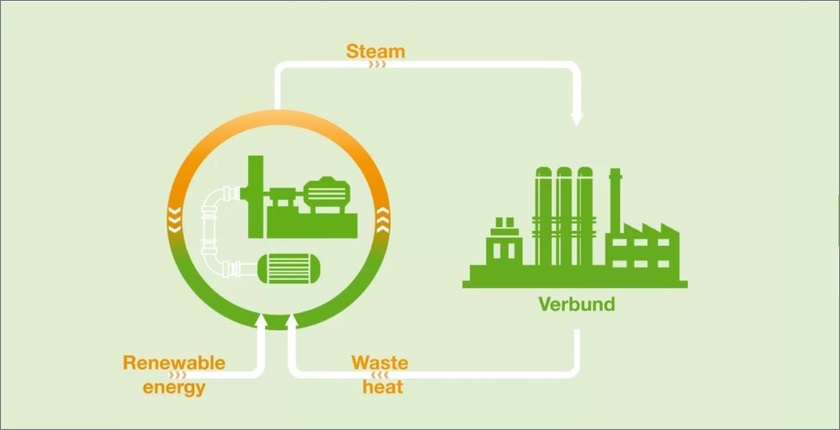
Photo: BASF
BASF says it is “creating chemistry for a sustainable future.” Set on the path to becoming carbon neutral by 2050, the company wants to use waste heat to make steam for its production process. To do this, the German chemical giant needs a heat pump the size of a football field.
The company is launching sustainability initiatives in almost all industry sectors. BASF is currently preparing to build an industrial heat pump in Ludwigshafen, Germany, which will play a key role in its climate protection strategy.
Chemical plants operated by the company generate a large amount of heat, and much of it remains unused. To reduce its fossil fuel needs, BASF plans to use waste heat from its production facilities and cooling water systems to generate much of the steam it will use in production.

Last year, BASF established a strategic partnership with MAN Energy Solutions for the construction of industrial heat pumps in Ludwigshafen.
The planned large-scale heat pump would enable the production of steam using electricity from renewable sources. The waste heat from the cooling water system is envisaged to be used as a source of thermal energy. The remaining heat in the water would be processed by compression to produce steam that will be fed into the steam network. The integration of the planned heat pump can result in up to 150 metric tons of steam per hour, which is equivalent to a heat output of 120 MW, MAN Energy Solutions said.
Energy efficiency without CO2 emissions
The steam produced this way is very energy efficient, and there are no CO2 emissions. The production of many of the chemicals that BASF supplies to almost every industry, including construction and agriculture, requires a huge amount of energy. The company says it needs 20 million metric tons of steam per year just in Ludwigshafen.
By building a heat pump the size of a soccer field, BASF will achieve its main goal – to use new technology and protect the climate at the same time.
“The heat pumps will help us generate huge amounts of steam, using renewable energy in an energy-efficient way and reduce our CO2 emissions,” the chemicals maker said in a statement.
Half of the steam that it currently uses is produced in conventional power plants, running on fossil fuels.
BASF’s climate strategy
BASF has a very ambitious climate strategy. By 2030, it wants to reduce greenhouse gas emissions and energy purchases by 25%. The company intends to achieve carbon neutrality by mid-century.
The chemicals giant plans to apply other technologies as well, such as e-boilers and electrified steam turbines, in its energy transition trajectory.
“It’s our task to find ways for BASF to generate steam without a CO2 footprint – and that’s what I love about my job. We develop solutions that help BASF, and also society!” said Vice President Bart Van Assche, responsible for infrastructure technology on a global scale.
BASF calls its working principle verbund, which means connection, combine or composition in German. Six plants are interconnected in such a way that byproducts from one production process become raw material for another, the company explained. This way it reduces the amount of waste and maximizes energy efficiency.
The company said that by reusing waste heat it saved about 18.7 TWh of energy in 2020 alone. In addition, CO2 emissions were reduced by 3.8 million metric tons.


















Be the first one to comment on this article.